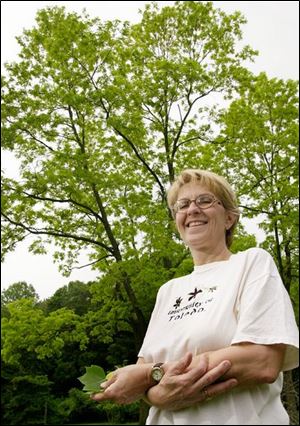
Toledo: Students plot 'virtual map' of vegetation
5/25/2005
Sandra Stutzenstein is arboretum program coordinator.
Start High School senior Mallory Plahs said she feels like an expert on the Black Cherry tree after having the opportunity to research it in the field at the University of Toledo's Stranahan Arboretum.
The 17-year-old student and the other juniors and seniors from Start's science research class have been going to the Sylvania Township arboretum once a month for the past semester to learn about a specific tree for a powerpoint presentation that may soon be available on the Internet for those who want to learn more about the featured trees, said Sandra Stutzenstein, program coordinator at the arboretum.
"I liked the idea of going out each month and doing field research," Miss Plahs said. "I really enjoyed when we went and tried to learn about our tree and explored the arboretum on our own."
This past year has been the first that high school students from Toledo Public Schools' Start and Woodward high schools, and St. Ursula Academy have been doing special projects at the arboretum, and Ms. Stutzenstein said she hopes students from other Toledo schools will be interested in working with the arboretum.
"They're the few schools that have assisted us," she said. "It's extremely worthwhile."
Along with their powerpoint presentations, the TPS students have been identifying trees and pinpointing their locations using GPS satellite positioning equipment to help produce a "virtual map" of the arboretum that will soon be available on the Internet.
"I thought it was a good chance for the students to do an environmental investigation," said Start science teacher Bob Borger. "I definitely want to use the arboretum for research because it is kind of real-world experience."
Woodward science teacher Tim Bollin said the Start students and those in his science research class incorporated readings from various sources to learn about trees.
"This was kind of a combination of liberal arts and science," he said. "This is a project that we hope to continue. Many kids in the inner city don't have a reason to go out to a place like that, so they gain practical experience in terms of liberal arts and research."
Next year, the arboretum staff plans to have units on groundwater, forestry, and soil analysis through UT's department of Earth, Ecology and Environmental Sciences, Ms. Stutzenstein said.